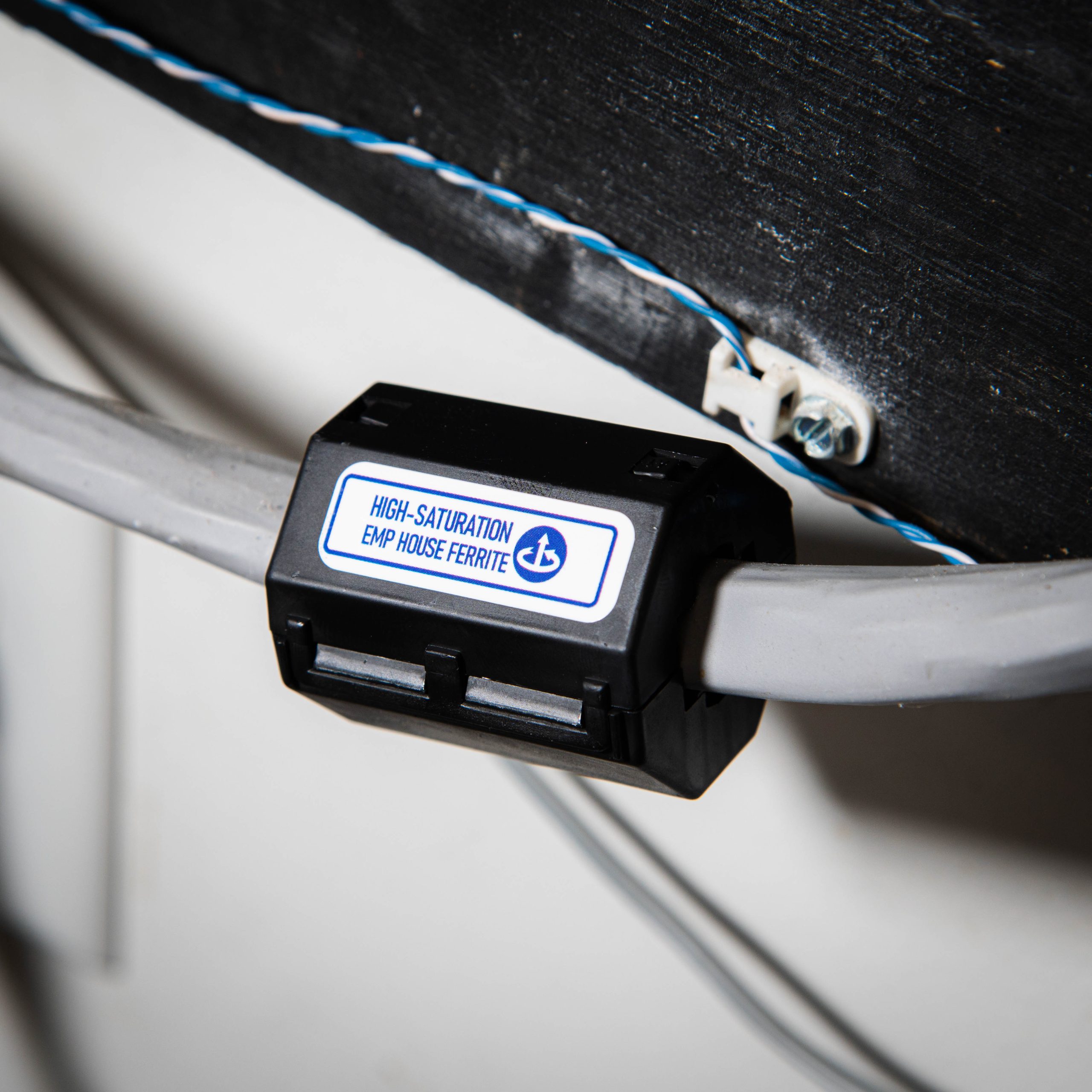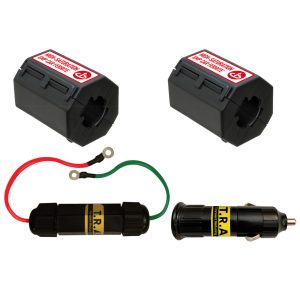Description
How to Protect your Home from an EMP or Solar CME
Please watch the video below for a more complete understanding of how to protect your home from an EMP or CME.
As you can see from the video, I recommend a three-step approach to home protection.
Step 1: Install custom high-saturation ferrites over your incoming power wires. Normal ferrites will not work well due to current saturation. The ferrites sold here are each individually modified to increase their saturation levels, allowing them to suppress high-frequency energy under higher currents. Note: Most homes require three ferrites (for Line 1, Line 2, and a shared Neutral/Ground). Some homes may have four wires and therefore, would need four ferrites (Line 1, Line 2, Neutral, and Ground). Order now while in stock.
Typical installation shown below. Always consult manufacturer’s instructions, and have a professional electrician do the installation for safety. Please note that ferrites tend to make a humming or buzzing noise when high currents flow through them.

Step 2: Install a quality whole-house surge protection device. Recommended device: Siemens FirstSurge140 (FS140).
The Siemens FS140 is now available on our website.
Step 3. Install smaller broadband ferrites around power cords of sensitive electronics. We sell a number of different sizes, as well as some bundles. Please see Individual Ferrites or Bundles.
What makes the High-Saturation EMP Ferrites Special?
The short answer is that normal ferrites will quickly saturate and become ineffective when placed on high-current lines. With my knowledge of electromagnetics, I was able to come up with a unique solution to the problem. See the video below for a detailed explanation.
I believe in this method so much that I put it on my own home. Watch the video below for tips on installation of the ferrites.
When to use high-saturation ferrites?
Clip-on high-saturation ferrites are used in four scenarios:
1. High current is flowing through the wires, and you can’t easily get to the ends of the wires to feed them through a toroid.
2. High current is flowing through the wires, and a clip-on broadband ferrite is not large enough to go around the wire bundle.
3. There is not enough space to fit a large toroid.
4. The application is such that a solid, non-hinging, ferrite is preferred.
High-saturation ferrites are available for the whole-house and automobiles (Automobile Ferrite Link).
When to use broadband ferrites?
Clip-on broadband ferrites are often used to protect small appliances and electronics (e.g., computers, TVs, etc.). They simply clip around the power cord. They can also be used on solar power generation wires and other applications where ease of application is desired. (Broadband Ferrite Link)
When to use toroid ferrites?
Toroid ferrites are great to use when you can feed the wire bundle through the ferrite. A good example is when trying to protect solar power generation system batteries. Simply disconnect the leads from the battery, feed through the toroid and reattach the leads to the battery (Toroid Ferrite Link).
How to install ferrites?
Broadband ferrites clip around wire bundles.
High-saturation ferrites clip around individual high-current wires.
Toroid ferrites are placed around wire bundles by feeding the wires through.
For frequently asked questions, click the FAQ tab. If you can’t find the answer, please use the Contact Button to send me a note.
Other recommended EMP Home Protection devices:







